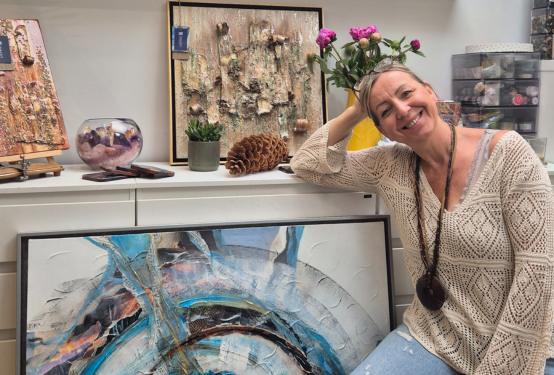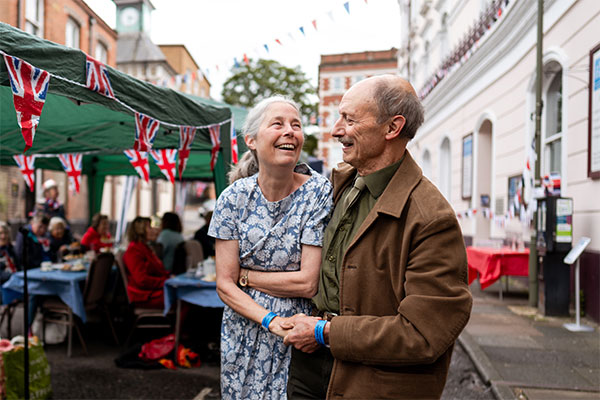Meet our cover artist, Aska Gough, who creates stunning mixed media and sensory art. Based in Surrey, Aska is inspired by nature and the multi-sensory experience it offers meaning materials and textures are at the heart of her practice. These can be as varied as tree bark, crystals and stones! If you love Aska’s striking artwork and are inspired to create your own, she will be running two workshops as part of our October to March programme. Find out more about Aska, how inclusivity forms an essential part of her artistic practice, exciting upcoming projects and more!

Can you tell us a bit about yourself and how you became an artist?
I’m a self-taught artist who has always loved making things, though for a long time I didn’t have the chance or perhaps the right moment to truly dive in. About six years ago, I began shaping my artistic style, at first as a way to nurture my wellbeing and reconnect with myself. What started as a gentle practice soon became a flood of creativity, pouring out faster than I could contain it, becoming a central part of my life.
In 2024 I chose to leave my job as a lecturer in translation studies at the University of Surrey and step fully into art. But research continues to shape what I do, especially in relation to multisensory perception, language and accessibility.
Inclusivity is really important to me. I believe everyone can be creative, and I want to make people feel that art is for them, whether it is their very first time, whether they are blind or neurodivergent, or whether they are returning to art after a break.
What is the inspiration behind your work?
We live in a world that often puts vision first, treating it as the main way we learn and experience things. But when sight dominates, it can overshadow other senses that also shape how we feel and connect. My inspiration comes less from what I see and more from what I sense and experience in a physical, embodied way. While my work may be visually striking, it is these non-visual encounters that inspire me most. This is why materials and textures are at the centre of my practice. I want my art to be engaging beyond what you see. Yes, it should catch the eye, but also invite touch and carry an energy and symbolism that people can feel.

I live on Prey Heath, and my daily walks through the woodland and heathland nourish both my soul and my studio. Bark, twigs, leaves and pine cones become my materials and my treasures. Visiting my stone supplier is another source of joy and inspiration. Surrounded by tonnes of glittering minerals and vibrant crystals, some raw with rough edges, others polished to a luminous shine, I feel like a child in a candy store and always leave recharged and full of ideas.
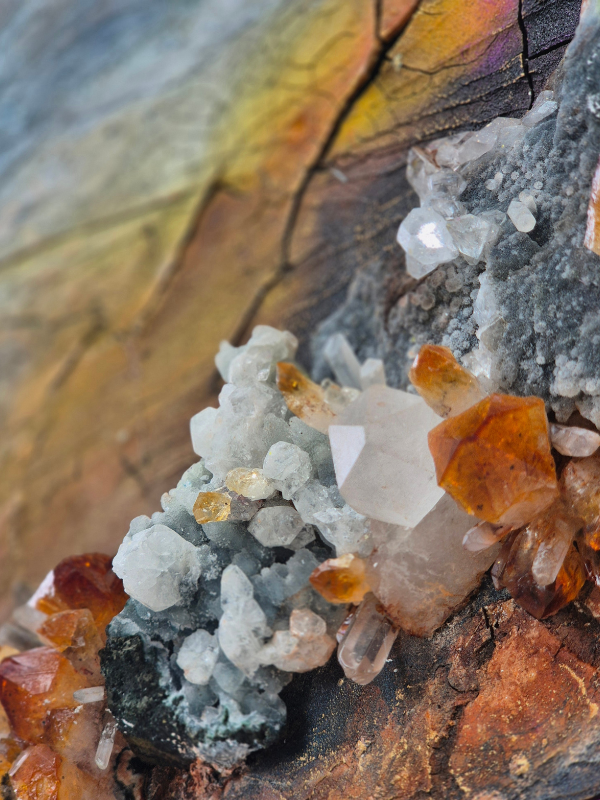
Your work uses unique materials like crystals and tree bark. How did that begin?
I feel grounded and restored when I am out in nature, which is why I am drawn to elements like bark, stones and crystals. At first I would collect simple pebbles on holidays, but as time went on and budget allowed, I began exploring crystals and more precious varieties. I also started to experiment with how these materials could live within my art, and they soon became central to my practice. Stones and bark feel like good metaphors. Stones carry the memory of the Earth, while bark holds the life force of the tree. Both can be durable and fragile at once, and both offer a deep sense of grounding. Crystals in particular fascinate me for their subtle energetic properties. Some seem to radiate energy, others appear to absorb it, and their symbolism can give people exactly what they need on an intuitive level.
Has your work changed since you first started?
Definitely. I first began experimenting with epoxy resin and different pigments, fascinated by the way colours shift within it and by the depth it creates, hiding and revealing little secrets as the light changes. Resin still fascinates me, but over time I felt the need to move beyond it and allow it to become one texture among many. That is when I started introducing the roughness of stone, bark and other earthy materials, contrasting them with the smoothness of resin or polished pebbles. More recently I have been exploring collage and a wider range of tactile surfaces, and I would like to introduce materials that feel soft and spongy, as well as plush and velvety. Overall, I am moving towards work that explicitly invites touch, enhancing the experience of art for people including neurodivergent, blind and visually impaired audiences.
Your stunning work, Arabian Nights, is our brochure cover. What inspired it?
Arabian Nights began as I poured leftover resin onto a canvas. As the colours blended and music played in the background, I was transported back to memories of visiting Marrakech and to the stories of One Thousand and One Nights that I loved as a child – tales of Aladdin, Scheherazade and enchanted worlds. Growing up in Communist Poland often felt like living in a black and white movie, so the vivid colours, fragrant spices and flowing silks I imagined seemed even more magical. With those memories stirring, the piece seemed to shape itself, as if it already knew what it wanted to become. For me, listening to the quiet cues of the body and the echoes of memory is essential, because when I do, the work often finds its own direction.
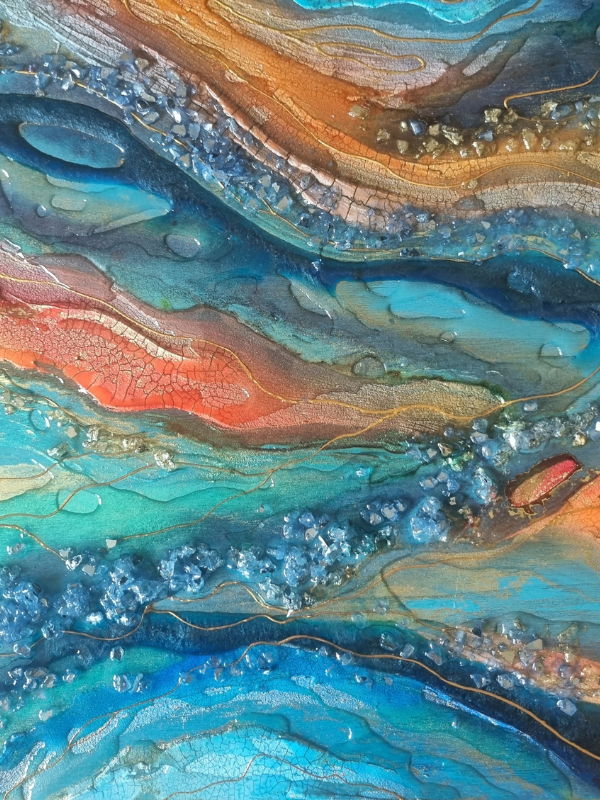
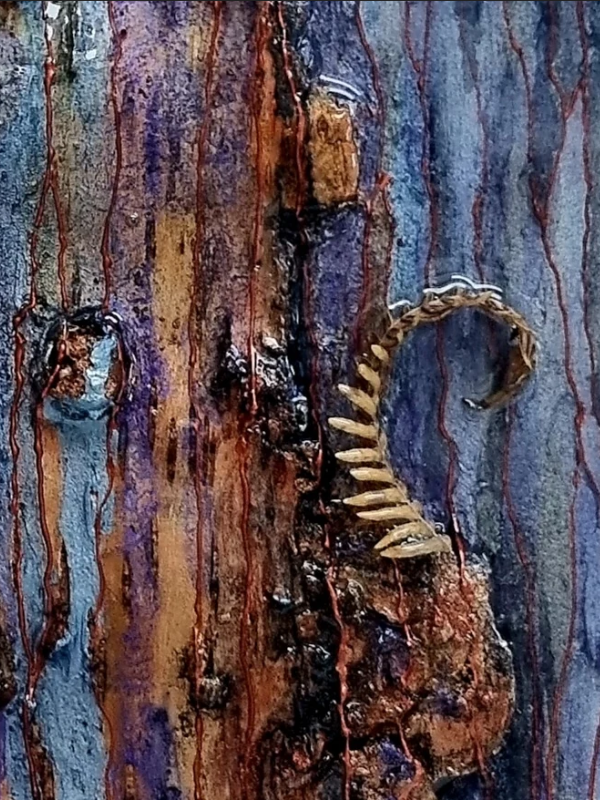
You’re running two mixed-media and resin workshops with us. What can students expect?
A relaxed atmosphere and pure exploration. There’s no right or wrong, just intuitive play. I’ll cover the technical bits, safety and materials, and I’ll guide you as much as you need. We might start with a short grounding or mini-meditation to notice what you want to express that day: colours, shapes, textures, moods, feelings, emotions. The goal is to let go of expectations and see what naturally emerges. Flexibility and an open, explorative mind are key.
Do you have a favourite artist or movement?
This is always hard because there are so many artists I’ve yet to discover. I love Gustav Klimt for his sensuous surfaces and the tactile illusion of richness he created. Generally, I’m drawn to abstract, textured work and innovative techniques. Artists like Sam Peacock, who works with non-traditional paints, varnishes and raw materials on rusty steel, and Peter Hayes, who blends river-weathered ceramics with resin, really inspire me. My favourite movement is Abstract Expressionism because it focuses on the process and the embodied nature of art-making. It emphasises spontaneous, intuitive creation and the physical act of painting as a direct expression of emotion and the body, which resonates with the way I approach the creative process.

What are you working on now? Do you have any upcoming projects?
I’m currently developing a new series called Noumenon, inspired by Kant’s idea of the “thing in itself”. It points to the reality of things as they exist beyond us, which we can never fully know because our senses only let us grasp part of the picture. For example, we only see a narrow band of light wavelengths and detect a limited range of sounds and smells, so what we perceive is just a fraction of what is really there. Working with crystalline minerals, tree bark and resin, I’m exploring how materials carry both a visible surface and an unseen essence, hinting at the layers of reality we cannot fully grasp. The series will culminate in an exhibition where audiences can engage through sight, touch and resonant soundscapes of gongs, chimes, singing bowls and drums.
Alongside this, I’m planning to develop workshops with and for visually impaired people and expand my knowledge of minerals and how touch shapes our experience of art. My research background in linguistics also informs a project on inclusive, AI-supported audio description. It aims to use multi-voice input from artists, curators, sighted and blind viewers to generate dynamic descriptions tailored to different needs and perspectives. I’m also active in community projects with Guildford Arts and Lockwood Studios, so there is a lot to do and exciting times ahead! I’m looking forward to my upcoming workshops at The Guildford Institute.
If you’re feeling inspired to create your own multi-sensory artwork, check out Aska’s workshops below – no experience required!
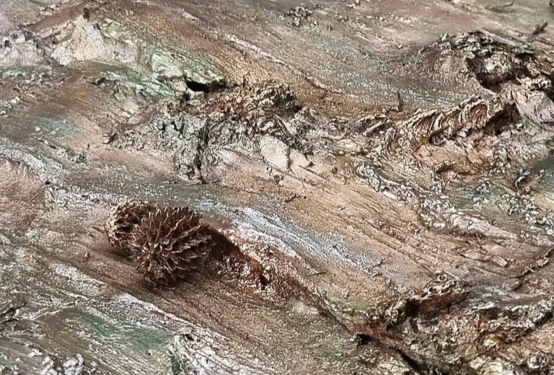
Mixed Media and Resin Abstract Art Workshop – Woodland
27 & 28 November, 10am – 12.30pm
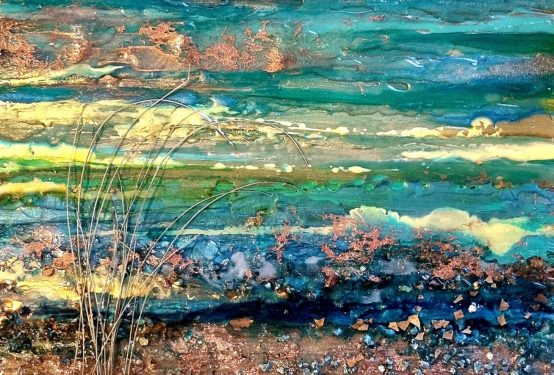
Mixed Media and Resin Abstract Art Workshop – Beach Landscape
22 & 23 January, 10am – 12.30pm
Keep up to date with Aska’s latest work by following her on Instagram and Facebook, or visit her website.

